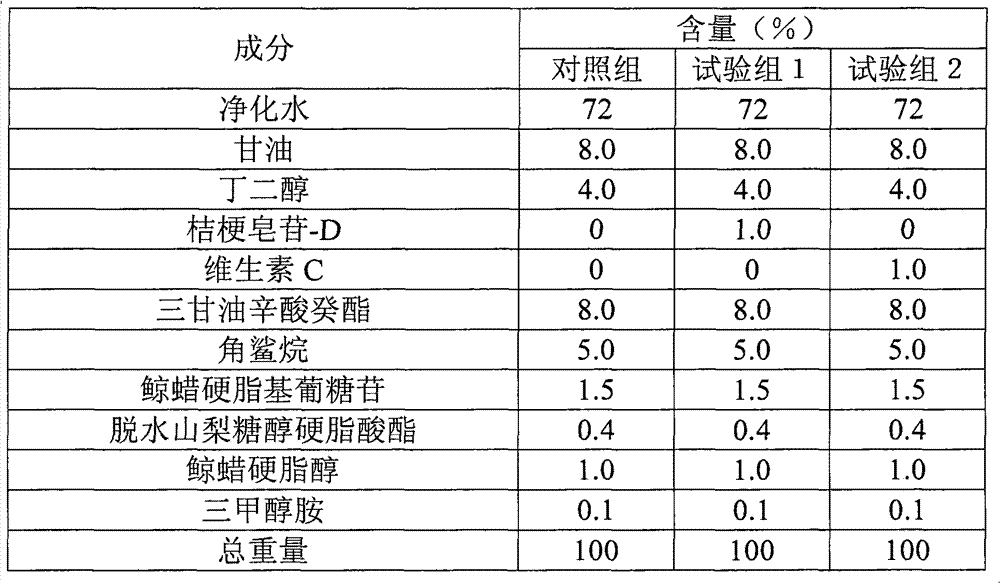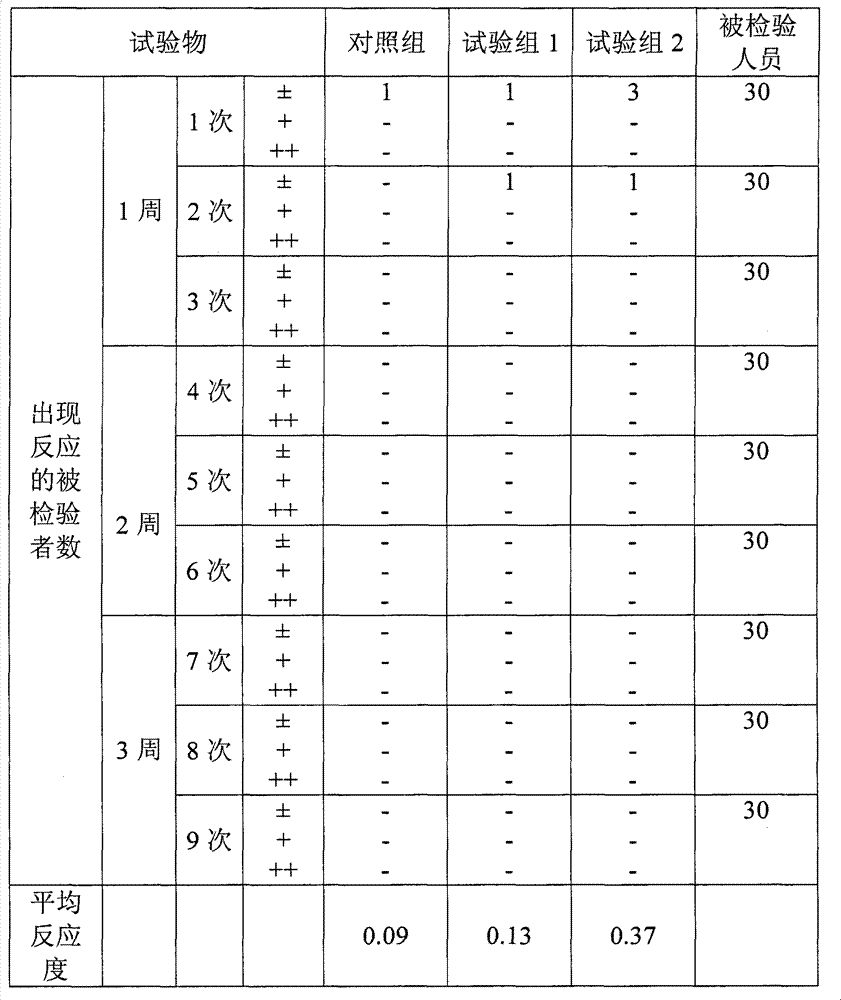Skin-whitening agent containing platycodin D
A technology of platycodon saponin and skin, applied in the field of skin whitening compositions, can solve the problems that the active ingredients have not been identified, and the same effect cannot be expected, and achieve excellent melanin production inhibition efficiency, excellent tyrosinase activity inhibition, and no toxicity and side effects
- Summary
- Abstract
- Description
- Claims
- Application Information
AI Technical Summary
Problems solved by technology
Method used
Image
Examples
Embodiment 1
[0045] Example 1: Determination of melanin production inhibitory effect by platycodon saponin-D
[0046] Using rat pigment cells (B16 melanoma cells), the melanin production inhibitory effect of Platycodon saponin-D (Sigma) was measured, and the measured effect was compared with the melanin production inhibitory effect of vitamin C, which is known to inhibit melanin production. Compare.
[0047] In this experiment, 1×10 per well on a 6-well plate 5 Rat melanoma (B16 F10) cells were inoculated in DMEM medium containing 10% FBS (fetal bovine serum) in 5% CO 2 and cultured at 37 °C until the cells adhere approximately 80% at the bottom of the wells. After culturing, the medium was removed and replaced with DMEM medium diluted with Platycodon saponin-D and vitamin C to an appropriate concentration, in 5% CO 2 , and cultured at 37°C for 3 days. The concentration range of Platycodon saponin-D was determined at 0.1 μM, 0.5 μM, 1 μM without cytotoxicity. Like Platycodon saponin-D...
Embodiment 2
[0051] Example 2: Determination of Inhibitory Effect of Intracellular Tyrosinase Activity Produced by Campanulaceae Saponin-D
[0052] Using rat pigment cells (B16 melanoma cells), the melanin production inhibitory effect by Platycodon saponin-D was measured, and the measured effect was compared with the inhibition of intracellular tyrosinase activity by vitamin C, which is known to inhibit melanin production. The effect is compared.
[0053] In this experiment, 1×10 per well on a 6-well plate 5 Inoculate mouse melanoma (murine melanoma) (B16F10) cells in DMEM medium containing 10% FBS (fetal bovine serum) in 5% CO 2 and cultured at 37 °C to allow the cells to adhere approximately 80% more to the bottom of the well. After culturing, the medium was removed and replaced with DMEM medium diluted with Platycodon saponin-D and vitamin C to an appropriate concentration, in 5% CO 2 , and cultured at 37°C for 3 days. The concentrations of platycodon saponin-D and vitamin C were 0....
Embodiment 3
[0057] Example 3: Evaluation of whitening effect at animal level
[0058] Using brown guinea pigs (Tortoiseshell guinea pigs; Brown guinea pigs), which are known to induce pigmentation by ultraviolet rays similarly to humans, the whitening effect by platycodon saponin-D was measured.
[0059] In order to induce hyperpigmentation produced by ultraviolet rays (UV) in the brown guinea pig, a 3×3 cm 2 shading aluminum foil with a square opening, and then irradiate ultraviolet light with SE lamp (wavelength 290-320nm, Toshiba) (total irradiation energy = 1350mJ / m 2 ). After the ultraviolet irradiation, the aluminum foil was peeled off, and the sample ( platycodon saponin-D and vitamin C) was coated by the following method. Pigmentation appears after 2 or 3 days of UV exposure, and reaches its peak after about 2 weeks. From this point on, each sample was coated.
[0060] The coating was collected once or twice a day for 50 consecutive days. The sample was dissolved and diluted ...
PUM
 Login to View More
Login to View More Abstract
Description
Claims
Application Information
 Login to View More
Login to View More - R&D
- Intellectual Property
- Life Sciences
- Materials
- Tech Scout
- Unparalleled Data Quality
- Higher Quality Content
- 60% Fewer Hallucinations
Browse by: Latest US Patents, China's latest patents, Technical Efficacy Thesaurus, Application Domain, Technology Topic, Popular Technical Reports.
© 2025 PatSnap. All rights reserved.Legal|Privacy policy|Modern Slavery Act Transparency Statement|Sitemap|About US| Contact US: help@patsnap.com



